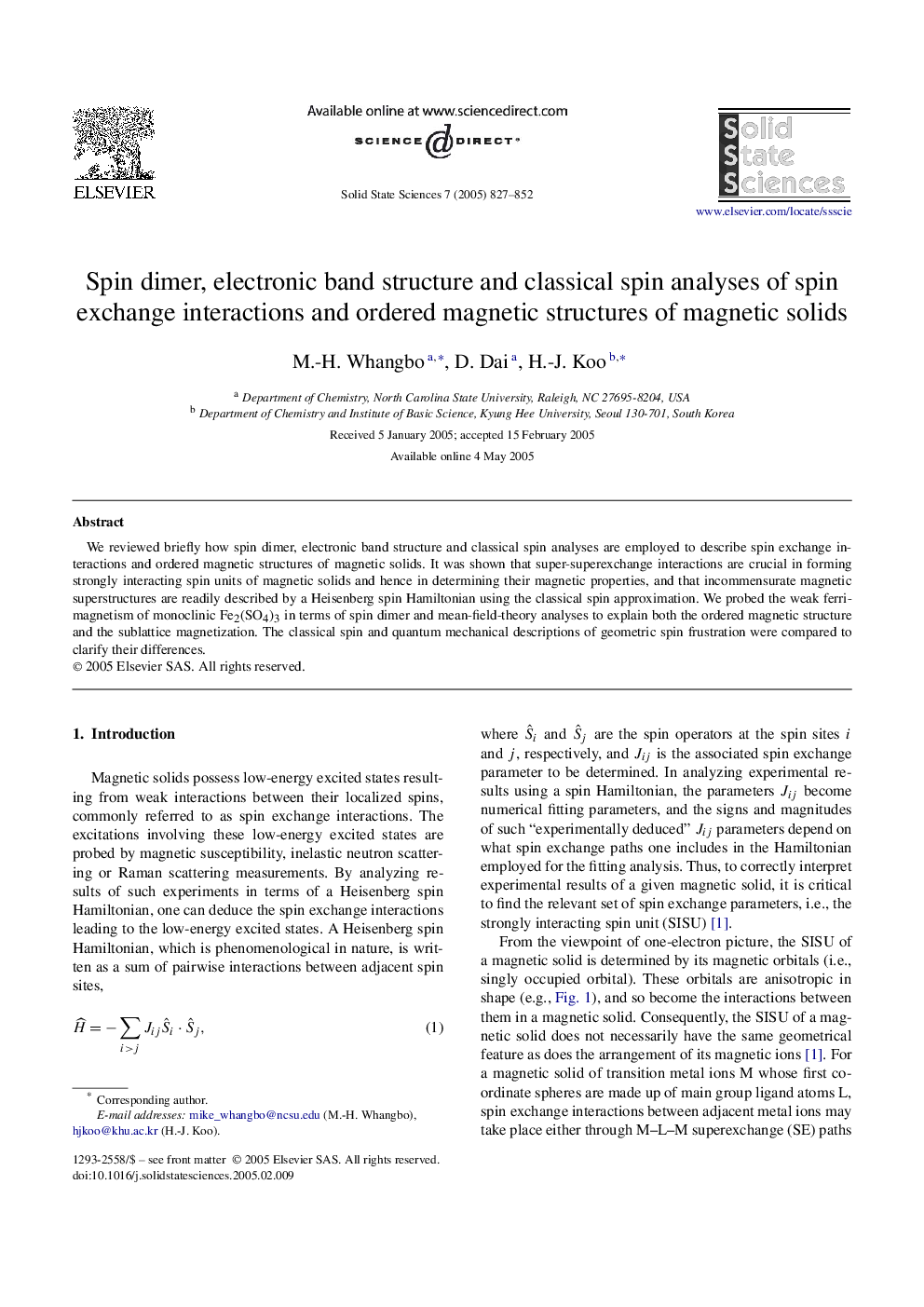| Article ID | Journal | Published Year | Pages | File Type |
|---|---|---|---|---|
| 10636873 | Solid State Sciences | 2005 | 26 Pages |
Abstract
We reviewed briefly how spin dimer, electronic band structure and classical spin analyses are employed to describe spin exchange interactions and ordered magnetic structures of magnetic solids. It was shown that super-superexchange interactions are crucial in forming strongly interacting spin units of magnetic solids and hence in determining their magnetic properties, and that incommensurate magnetic superstructures are readily described by a Heisenberg spin Hamiltonian using the classical spin approximation. We probed the weak ferrimagnetism of monoclinic Fe2(SO4)3 in terms of spin dimer and mean-field-theory analyses to explain both the ordered magnetic structure and the sublattice magnetization. The classical spin and quantum mechanical descriptions of geometric spin frustration were compared to clarify their differences.
Related Topics
Physical Sciences and Engineering
Materials Science
Ceramics and Composites
Authors
M.-H. Whangbo, D. Dai, H.-J. Koo,
